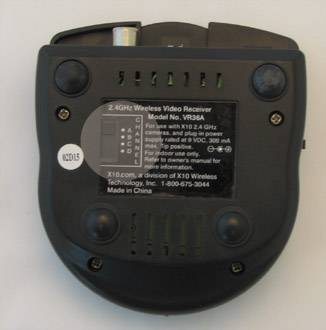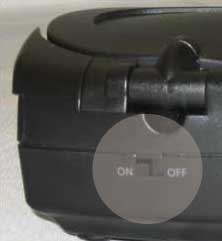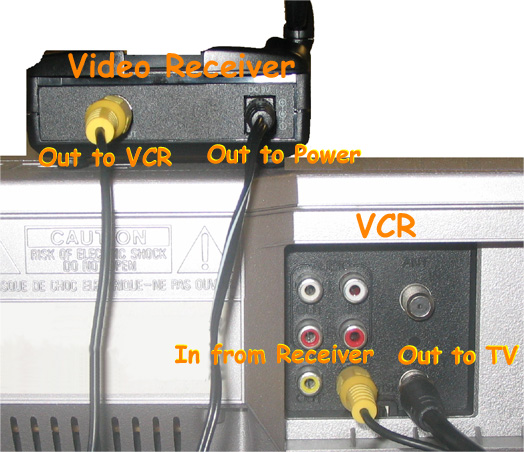Troubleshooting Floodcam Picture on TV
Jump to navigation
Jump to search
Questions
My camera doesn't work. What should I do?
Why can't I get the camera's picture on my TV?
Answer
- Check that the receiver and the camera are on the same letter channel (A, B, C, or D). The channel switch on the camera is located under the waterproof door on the underside of the sensor/camera assembly. For testing purposes, set the Camera Mode switch to Manual.
- You should see a red power light on the front of the Video Receiver. If you do not, check that the On/Off switch on the side of the unit is set to On. Also check the power supply connected to the video receiver: its model number should be D9300 or PR30A. If the power supply is a D9100, that is the transformer for the VCR Commander; it will not provide enough power for the receiver.
- Verify that your connections to the TV are correct. If you are using the RCA jack(s), make sure the TV is set to its video input mode for your television. Consult your VCR or television user guide for support on connections and selecting the correct channel. If you have the VR31A audio/video receiver and are using the coax cable, verify that the Video Receiver and the TV are on the same channel (3 or 4); the switch for this is located on the bottom of the Video Receiver. We do not recommend using both the coaxial connection and the RCA jacks.
- If you connected the Video Receiver to a VCR and the VCR to a television, consult your owners' manuals for more information on setting your VCR and TV up for video input.
- The camera needs a well-lit area for a good picture. It cannot see in pitch darkness. You could add X10 Home Automation products to remotely turn on a light near the camera when motion nearby is detected. See this link for more information.
- Take a look at what the video signal is passing through or near to get to the receiver. Metal objects and electromagnetic fields can distort the signal. Try to keep the Video Receiver as far away from other devices as the RCA or Coax cables allow. In most cases, moving the Video Receiver up a few feet is enough to avoid interference. Try unplugging/turning off any interference-producing devices, such as a microwave oven, baby monitor, computer, wireless LAN, wireless speakers, cordless phone, cell phone, etc. The FloodCam will broadcast straight back through the wall it is mounted on, so try to move the Video Receiver on-axis to it, not off at an angle.


